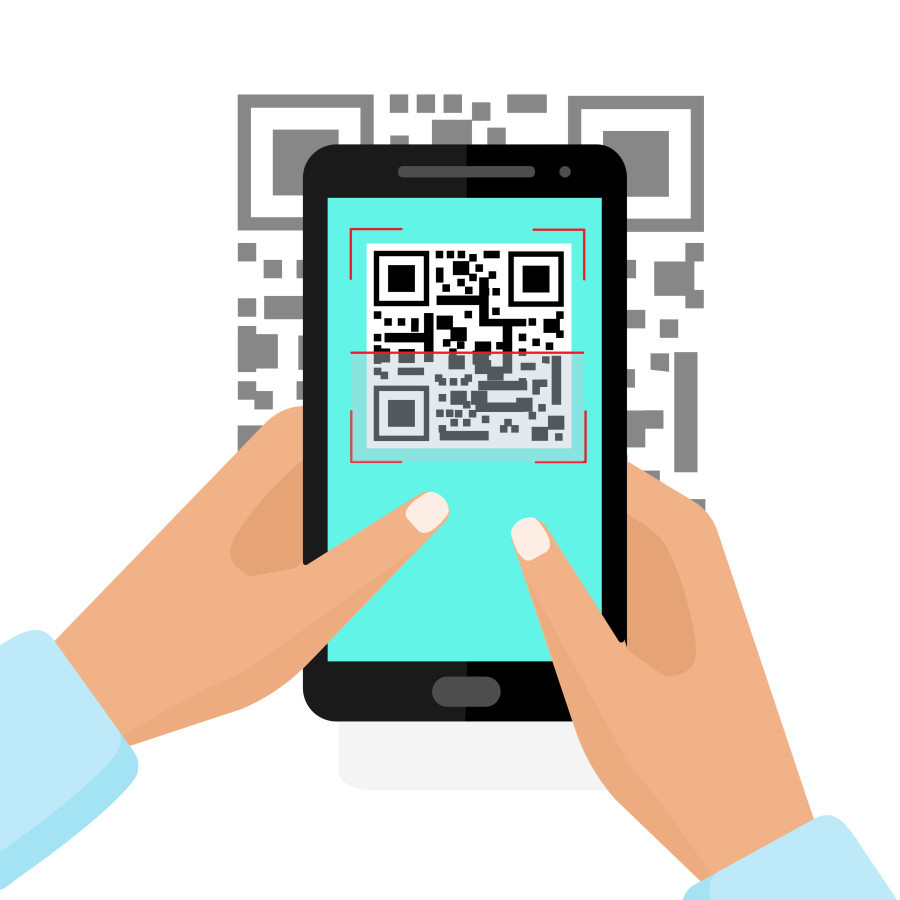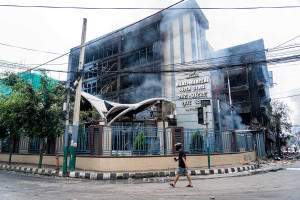Money
Nepal allows digital retail payments in all countries
Payment system operators are assessing whether QR codes, a hassle-free and low-cost payment system, can be used to send remittances.
Krishana Prasain
Nepal’s central bank has allowed Nepali payment system operators to deal with digital retail payments in any country.
For example, a Nepali payment system operator (PSO) can now agree with any PSO in any country to launch the quick response (QR) code payment system for the citizens of both countries to make purchases.
Nepal Rastra Bank issued a circular on June 27, allowing a merchant-to-person payment (M2P) system. PSOs can now make agreements with PSOs of any country and start the service.
However, before signing a memorandum of understanding, the PSOs need the central bank’s approval.
“The central bank has fully opened the retail payment system. Nepali PSOs and PSOs of any country can now jointly start the retail payment service through QR code,” said Gunakar Bhatta, executive director of the Payment Systems Department at Nepal Rastra Bank.
As the central bank has allowed merchant payment on the purchase of goods and services, the PSOs have started taking approval to start the service, Bhatta said. By coordinating on issues like bank settlement and dispute settlement, the licensed private sector PSOs can start the service.
The central bank said that the withdrawal limit for a Nepali in a foreign country would be according to the existing foreign exchange rule, which is $2,500 per visit and $5,000 annually.
There are 10 PSOs operating in the country as of mid-May.
The QR code system in Nepal is relatively new.
Starting March 1, Indians were allowed to make payments through their mobile phones. The development was hailed as a milestone in cross-border digital payment between Nepal and India, facilitating the students and people going to India for medical purposes.
Nepal’s Fonepay, a PSO, has partnered with India’s NPCI International Payments to launch the cross-border payment service using quick response (QR) codes.
With the central bank's provision, Fonepay has already started working, allowing Nepali nationals to make QR code payments in India.
On June 1 last year, Fonepay signed a memorandum of understanding with Sri Lanka’s National Payment Network—LankaPay, to collaborate on a strategic partnership to revolutionise the digital payment landscape by developing an interoperable digital payment system that enables users to transact seamlessly across the two countries.
However, in the lack of regulations, the QR code payment system did not start.
“We have requested the approval for QR code payment service with Sri Lanka. We will soon start the facility,” said Paras Kunwar, chief operating officer (COO) of Fonepay.
“Besides Sri Lanka, China is another market that we are looking at. We have started discussions with China UnionPay and Alipay+ to make cross-border QR code payments.”
In May 2019, Nepal banned WeChat Pay and AliPay, stating that online payments through unregistered systems were illegal and resulted in a loss of income for Nepal. WeChat Pay, operating on Tencent’s messaging service, and e-commerce giant Alibaba’s Alipay are the two dominant platforms in mainland China.
In June last year, Chinese digital payment service WeChat Pay and NMB Bank Nepal partnered to make the mobile payment system available in Nepal, allowing Chinese nationals visiting Nepal to pay for their purchases using their mobile sets.
Kunwar said they would begin a QR code system in India from August. “For this, Nepali commercial banks are working on transaction limits and other issues.
“We also need to adhere to many provisions including anti-money laundering and combating the financing of terrorism (AML/CFT) before starting the cross-border payment services.”
Kunwar said that the company is looking for other potential markets overseas where most Nepalis reside.
For instance, South Korea is another prospective market for QR code payment.
“We are looking into whether remittances can be sent through QR code if the central bank allows it. Nepal can be a potential market for tourists from South Korea and Japan and the service can allow them to withdraw money in Nepal.”
Just like regional economic blocs, the payment service has also started making regional payment blocs. There is Asian Payment Network, a retail payment platform supported by the Association of Southeast Asian Nations (ASEAN), Kunwar said.
“There are 17 members of the Asian Payment Network of ASEAN, including Sri Lanka from South Asia. Fonepay recently became a member of the Asian Payment Network, and with this, we can integrate the system with the 17 member countries.”
The QR code system has become a boon for tourists, especially those from India.
For instance, within three months of starting QR code payments to Indian citizens, Fonepay is handling around Rs5 million transactions daily.
It has reduced the hassle of carrying cash. The Nepal government has banned all Indian notes above the denomination of 100.
With the Fonepay service available in Muktinath and trekking areas connected to Pokhara, Indian tourists are increasingly withdrawing money while in these areas.
According to a central bank report, QR code transactions sharply increased to Rs52.75 billion in mid-May from Rs45.67 billion in mid-April, after Nepal allowed Indian citizens to make payment via QR code in Nepal.
The number of transactions also increased to 17.63 million from 16.10 million during the review period.
QR code transactions increased to Rs53.88 billion from mid-May to mid-June, with a total of 19.82 million transactions.




 19.12°C Kathmandu
19.12°C Kathmandu













%20(1).jpg&w=300&height=200)
